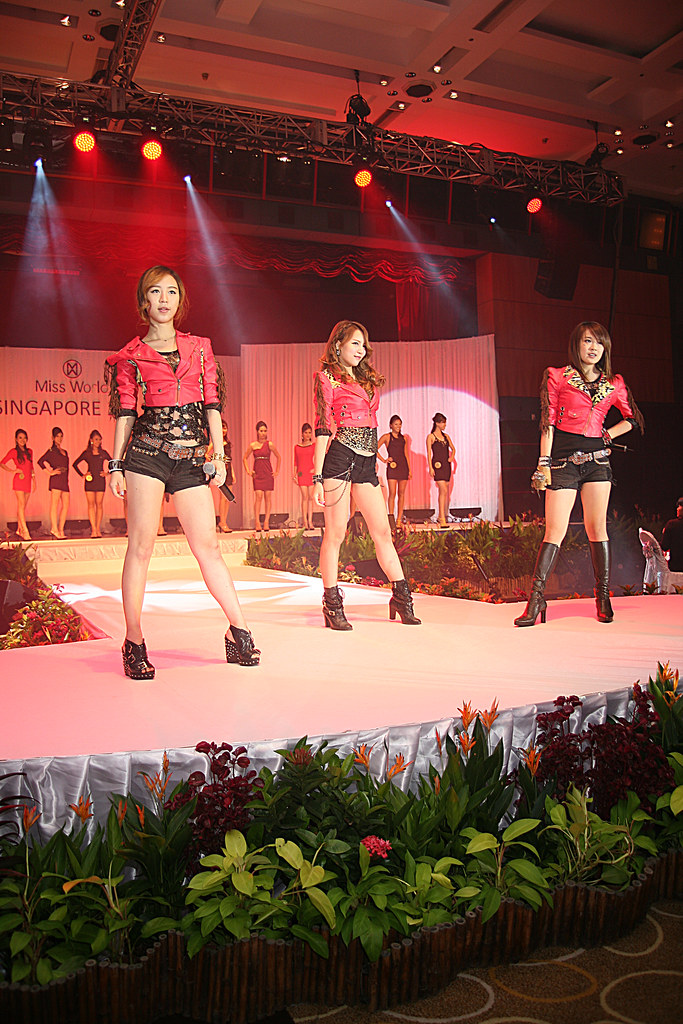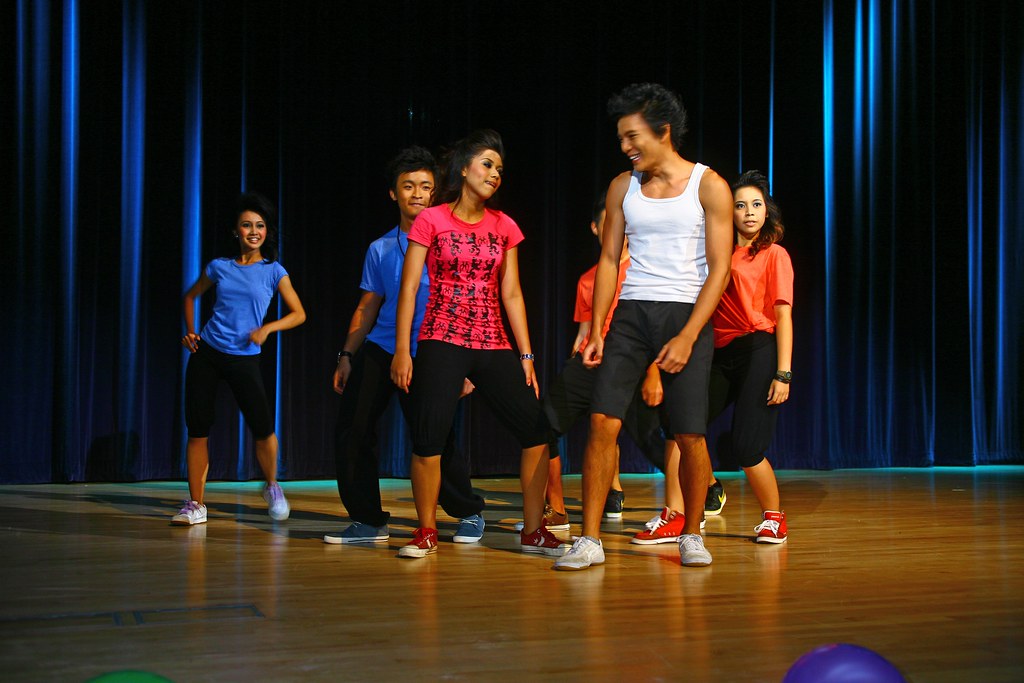Nicely lit photo example by Zeisser there but that example is a special public event with ample lighting of running spotlights and some fill ambient light. But I think when TS is talking is his typical SCHOOL HALL where lighting may no be as elaborate? ( a photo from him would help) Also don't think he is asking what gear to upgrade as the option. If so, think some here had already covered that.
Something to add
In general for all in similar situation and not just directly for the TS using EXISTING gear before considering buying better gear or accessories:
Learn to know the camera gear you bought including the pitfalls of limitations. What it can or can't do under different lighting situation. You need to know well within those limits, there will be types of shots you NEVER be able to capture well so focus your effort on not getting frustrated and concentrate on what's possible for clean captured shots. Get upset later in your postmortem of editing your shots.
Know the school hall stage and lighting in advance if possible and how it's being used for the event. This is a no "brainer" if you are the designated or one of the key photographer of events in your school.
Scout the best locations to shoot. Be it stationed at one point or multiples. Know the pitfalls of shooting from there. Notice the focus of lights positioned, be it ambient, fixed or follow spotlights..etc? Notice the hot spot areas. This knowledge is your bonus for getting good shots.
Note, lighting is not just about illumination. It can compliment the person(s) face or feature or make them look flat and bad. Especially panel speech, debates..etc where no one is moving about unlike a full stage performance event. It's like taking portraits using existing light to paint' your shot. Use the lighting in the hall like an extension of your flash. ( whether you use your actual flash or not ) When you use your flash, think of where you are, how far the "throw' of your flash is from where you stand. I tend to think of the flash as my fill light if I can help it. But that is my style and I like using ambient light to balance for a nicer shot. To think of it as my main illumination, again there are limits good and bad. I think most already know or shared. Now unless you are allowed to get up close to the stage to shoot the kids, you have very little options using flash. ( lots of batteries for sure but then the recharge time between flash? )
Do test setting shots to check the range of exposures of the stage at it's brightest, mid range and darkest, What exposure setting for ambient lights only, when spotlights are use..etc on stage? These steps helps you better anticipate setting changes on the fly without wasting time thinking about it.
Don't just concentrating on fiddling with your camera setting ( you should have figured it out by time the event is starting if possible ) but be aware of the event to clue you in on what might happen next so you are focusing there before it happens especially for performances. Go to the rehearsal if the event you are shooting is that important or you are the main photographer for the school. You need to do your homework before the event. If you are just part of the audience, that is another story but you can still try to anticipate. And you can only do that if you don't keep fiddling around with your setting and not watch the event unfolding before you.
Focus on situation, people on stage are moving or gesturing with the LEAST amount of movement or posing still. ( if you have seen the rehearsal and know where they will be position etc even better)
The more spotlights are used to focus on the people with the less amount of ambient fill lights, you should take time to figure out keylight shining on them for proper exposure. Don't worry if background gets too dark for details or little illumination on the props. Sometime you want to keep the focus on your main subject more then trying to capture EVERYTHING about the scene to make sense. Isolating is a great way to draw attention to the subject. Let it be. The importance is capturing a good story composition on the person is just as important. Knowing the intensity of the spotlights are important if they are mainly use to light up key person(s)
I stress knowing stage lighting in advance because, for myself, I try to shoot in MANUAL MODE in tricky light situation to prevent light sensor in my DSLR from going crazy trying to compensate for the changing dark/bright portions of my composition. You'll be surprise the options your shutter or aperture setting can get once you figure out that out. Like a music stage performance where main lights are on the performer(s) and the rest of the stage is almost in the dark or low light, your DSLR light sensor does not know that. So it thinks it's too dark and will try to slow down your shutter or widen your aperture ( when in A or S modes or auto modes) to let more light in thus you are reduce to using slower settings. Take control, shoot manual if your DSLR keep turning out exposed shots badly.
Example of exposing for key lights:
https://www.flickr.com/photos/sammytan/14913642194/in/set-72157648760489595
With any scene too bright or dark, I use a photo editing software like PS or Lightroom to tweak exposures in the shot. Better still, to get a good amount of exposure 'latitude' in POST EDITING I say shoot RAW. JPEG will lose you fine details each time it compresses and save the shot. Compressed file images already lost too much details in shadows or highlight to "resurrect" later in post edit. RAW files get as good as 2-3 stops pushing up or down exposures. That can save you some shutter speed or f-stops.
ISO are getting better with each progressive DSLR entering the market, you keep pushing the ISO higher to try to get higher shutter speed or bring out details from dark subject. While you are doing that, don't forget about the story you are shooting. A good story trumps a slightly bad exposed or blurred shot. And sometime there is a beautiful shot in keeping certain things in the dark where it should then try to capture everything in bright light and details.
Don't be overly worry about grain or 'tack sharp' even pros don't always get it right. Pixel peepers will always bitch about it. But seriously, you shoot for 99% of people who look at the photo and can't tell the differences. If those majority did, they will not be holding up smartphone taking blurry grainy shots at a concert. Who are your photos for? Yes a certain standard is important but you have to know where it starts and stop with what makes a good shot. And that comes from experience and learning.
Only after you have done everything you can with what you have THEN do you justify buying more pricey gears then you ( or they ) think you need or worst only for shooting just a few of those 'rare' situations and you are not paid to do it. So that is money going to waste. If your school expects you to shoot nice shots at every school event then MAKE THE SCHOOL BUY THE GEAR. Or are you shooting for fun?




